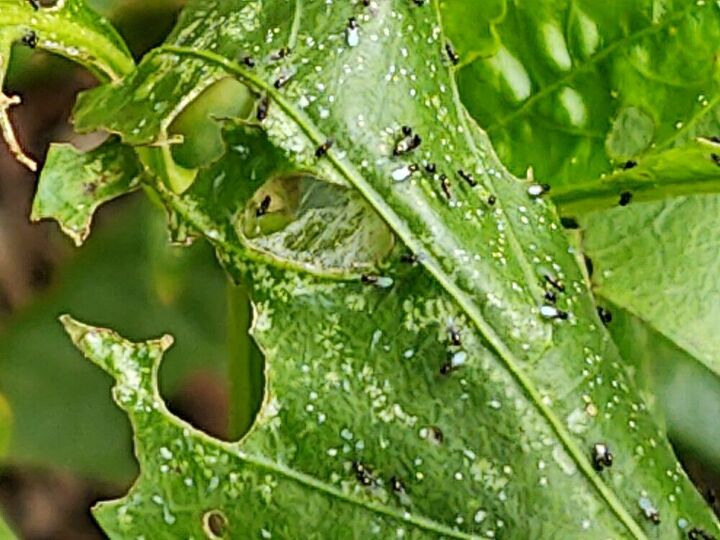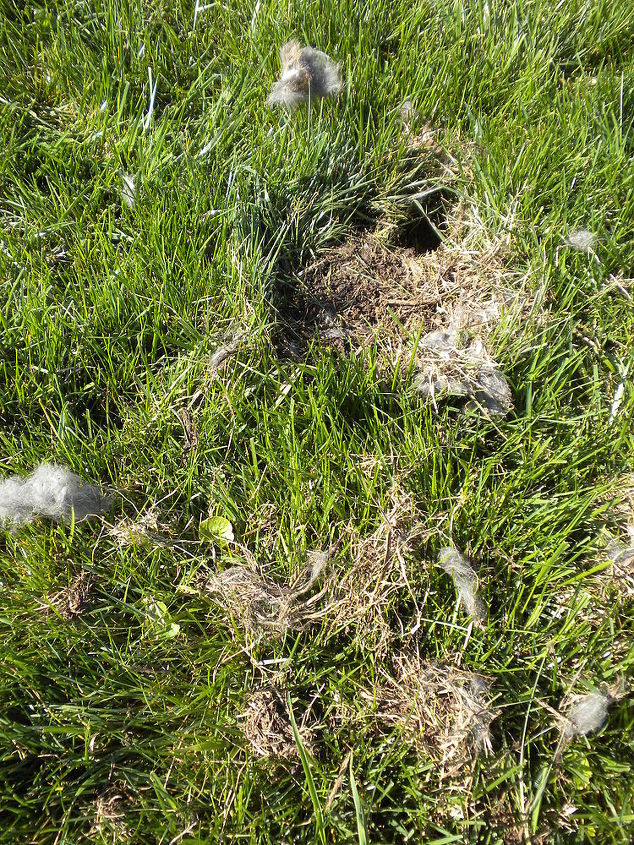Insects?
Can someone please tell me what these little insects are & how to get rid of them? Also, I have handpicked several tiny caterpillars that were feasting on the leaves. I continue to inspect the plants daily. Thanks!
Related Discussions
GNATS - How to get rid of them?
Somehow my house and garden got tiny gnats that killed my fuchsia plant and fly everywhere. I have tried ALL the Web recommendations - soap and oil dishes, sand in th... See more
Marigolds growing! Should I pinch the buds?
My marigold plants are growing. I heard that pinching the buds until Autumn will allow them to grow without killing the plant. Is this true?
Growing garlic
Growing our first garlic, should we wait until the leaves are drying out before we pick it? Husband picked first one today along with our first potatoes.
How to keep mice out of your garden?
Hi everyone, I have mice in my garden destroying my vegetables and I have also noticed them in the barn and shed. Please can someone tell me how to prevent them from ... See more
What's the best flower/plant to grow in Texas?
I know that opinions vary, but what's your opinion?!I have great luck w Rosemary plants. Green all year long.
Can someone tell me what kind of animal this was in my yard?
I thought maybe a rabbit was burrowing in my yard, but it's almost dead center of my lawn (not a very smart rabbit). The hole is not very deep, and I replanted it onc... See more
Is Creeping Charlie in your lawn a good thing or a bad thing?
Is there a sure-fire way to get rid of Creeping Charley?








It is a Fireweed Hawk Moth/ Hornworm
Adults are large, grey, with a red band on the hindwing. They can have a wingspan up to 6 cm. Commonly called hawk moths or sphinx moths they are often confused with hummingbirds due to their large size and flight patterns. They are important pollinators and can be found feeding on nectar between May and August. Larvae are called hornworms due to the characteristic "horn" on the eighth abdominal segment. Larvae are quite large, reaching as long as 8 cm and can be green or black in color with pale spots on the body. They overwinter as pupae in the leaf litter.
In boreal or montane North America they are referred to as bedstraw hawk moth as that is their main host there.
Hi Therese, handpicking these guys works well as long as you don't have an infestation. Looking your plants over daily and squishing any you find would be good.
Thanks. What about the little tiny insects crawling on the leaves? Any idea what they are & how to get rid of them?
Here is a link that might help you. As an aside the Bt is good, but you have to get the caterpillars to eat it, otherwise it is of no use. The larvae on the bottom of the leaf is the next generation of caterpillars that are eating away. They will also eat more as they mature. You might pick a caterpillar and take it in a baggie to your local nursery and ask what they have to kill it along with the larvae.
https://drecampbell.com/natural-ways-get-rid-caterpillars-plants/#:~:text=11%20Natural%20Ways%20to%20Get%20Rid%20of%20Caterpillars,Garlic%20Mixture.%205%205.%20Chili%20Spray.%20More%20items
Please just leave them alone. They are an important food source for birds. The damage they do will probably be minimal and they will emerge from their cocoons as pollinators.
I wish everyone would read this book. Bringing Nature Home, by Douglas W. Tallamy
Hello....for the best local professional advice
I would highly suggest contacting your cooperative extension. These offices are manned by volunteer master gardeners on site there waiting to answer the communities questions that know your local situation quite well.
Master gardeners are required to volunteer back designated hours ( plus continuing education) each year to maintain MG certification -this community outreach and education is their goal.
If your office is closed....there Might be alternative online venues like Ask an Expert as well as emailing your local master gardeners extension office for their guidance.... in a non contact manner.
Sometimes when I find insects on my outdoor plants are use the garden hose to spray them away -doing that several days in a row it can be quite effective. Can you tell me more about the leaves that the flying insects are on - could helpful to identify them correctly.....l meanwhile here’s a link.
https://www.uvm.edu/sites/default/files/Extension-Master-Gardener/BugBook.pdf
Spray with Neem Oil to get rid of the caterpillars if you must but they will not kill the plants. They are important for the food cycle! Available online, Home Depot, nurseries, etc. Don't spray in direct sunlight or you will burn your plant.
Alypia octomaculata, the eight-spotted forester, is a moth of the family Noctuidae. It is found in the Eastern part of the United States, Texas and Florida. It is also present in parts of Canada and Mexico. The moth is black, with 2 whitish or yellowish spots in each wing. The wingspan is 30–37 mm.
Wikipedia
There are sprays at your local nursery shop
Nematodes for caterpillars will come in a spray or bag of powder form, whichever you prefer (order on amazon) or you can buy concentrate to mix and spray, also neem oil on your non-edibles to keep the moths that lay the eggs that the caterpillars turn into from getting to any of you other plants, all types of caterpillars are very destructive and like beetles will transmit killing viruses to your plants. Look up Dr, Bader's bug solutions is also a good book for gardeners.
I would visit your local nursery with one of the caterpillars. Different plants will tolerate different solutions. I would also suspect that depending on your climate, the weather change may take care of them without intervention.
I've used these nematodes before with success. https://amzn.to/3484lbw
Hope this Helps! Jeremy - https://do-daddy.com
I have pet ducks and they love to eat little grubs like this
It looks like the dreaded Gypsy Moth. We had lots of them in Connecticut, but fortunately we moved to the west coast.
Looks like a Gypsy Moth to me.
I thought it was a gypsy moth....